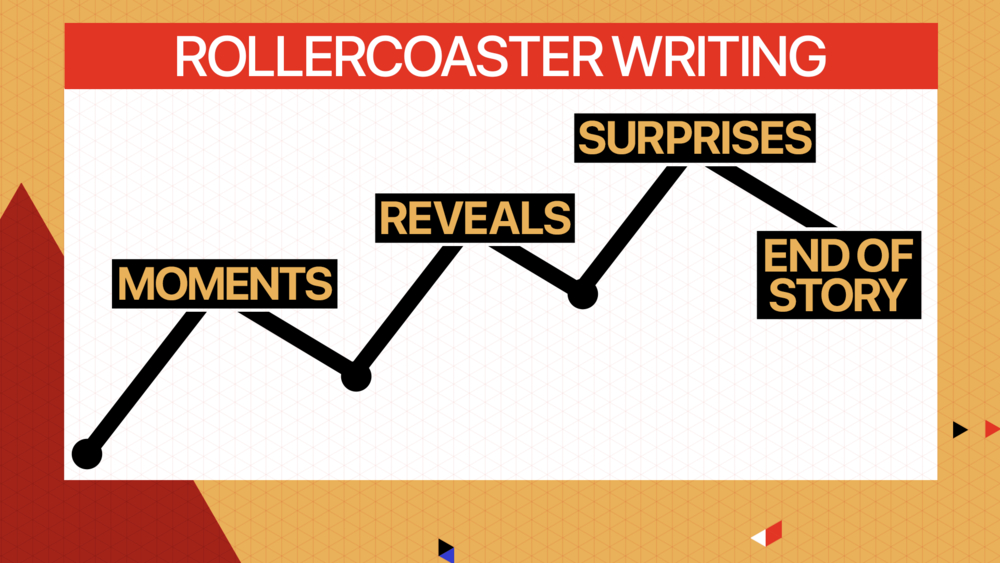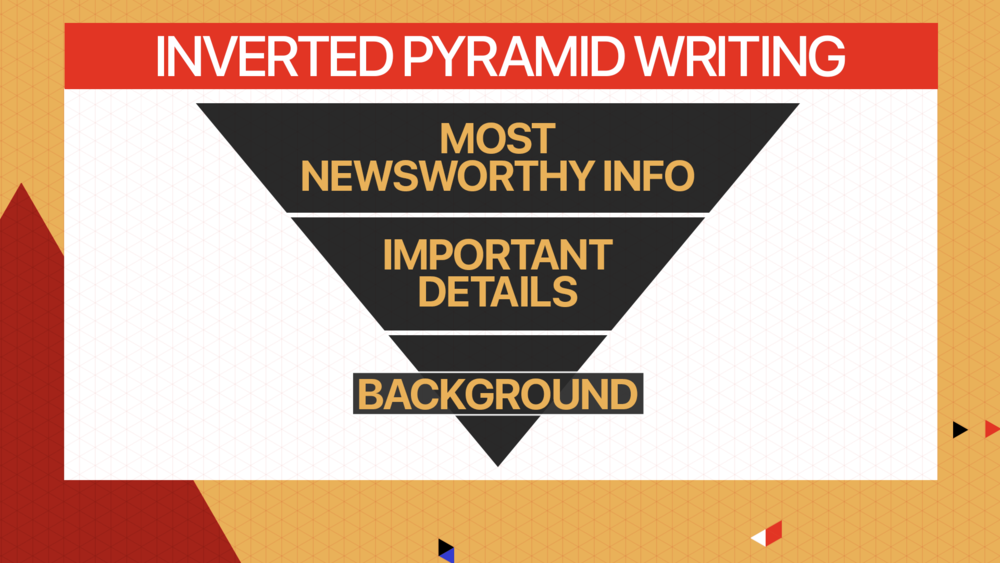NBCU Academy 101
News writing — especially feature writing — is full of ups and downs. NBC News Now Anchor Joe Fryer walks NBCU Academy through the “roller coaster” method of storytelling.
Why does Fryer use the image of a roller coaster? A well-told TV news story, especially a good feature story, will have lots of “ups” throughout the entire piece, representing reveals or surprises, a compelling soundbite, a powerful reunion or simply a poignant emotional pause. These moments in your feature writing, big and small, are what people will remember. Don’t put all your great moments and characters at the beginning of the story. They should be peppered throughout the piece, so that viewers watch it from beginning to end.

This contrasts with a model taught in journalism classes, the “inverted pyramid.” This model says you start with the most important information — the who, what, where, when, why and how. Then, as the piece progresses, the information you include becomes less and less vital. If a roller coaster followed the inverted pyramid model, it would start up high, have a big drop at the very beginning and then stay flat for the next two minutes. No one would probably enjoy that experience very much, unless you really hate roller coasters.

The inverted pyramid does work for breaking news. If there’s a huge story unfolding on live TV, you want to give people the most important information as soon as you know it, so viewers will stay tuned in and feel informed. But for so many other stories that we tell using video, especially feature writing and human-interest stories, the roller coaster is a great mode.



